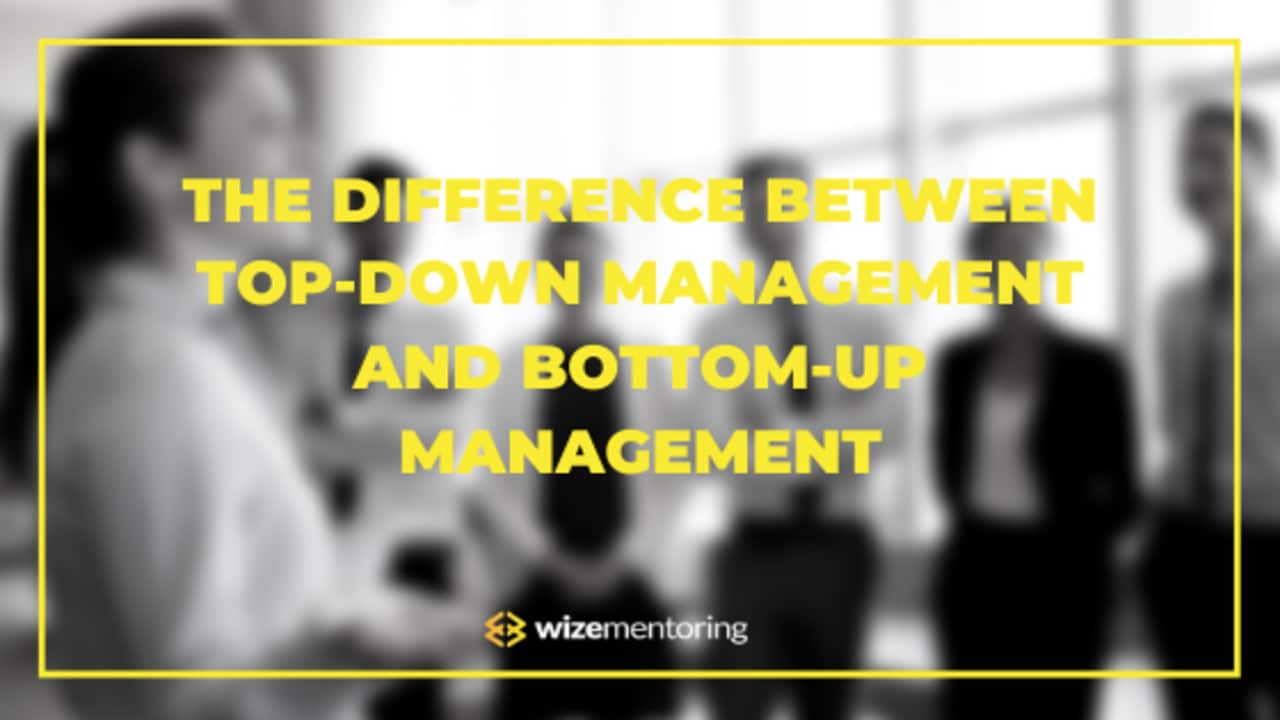Success won’t be about how well you prepare a tax return but it will be about how well you manage your staff and client. However, we were never taught to manage people so we sort of tumbled along creating a lot of damage to all.
So, let’s take a look at your management style because the different styles will mean the difference between:
- Good productivity versus poor productivity.
- Good staff Morale versus poor staff Morale.
- Happy clients versus unhappy clients.
- Poor staff wages versus Good staff wages.
- Good shareholder profits versus poor shareholder profits.
- Creditors get paid on time versus Creditors are paid late.
The difference between Top-Down Management versus Bottom-Up Management is similar to Command and Control versus Leadership by Empowerment.
Top-Down Management is about getting Control (Command & Control):
“Do as I say. This is the way you need to do it and I will micromanage and check on your every action”
“There will be punishment if you make a mistake.”
“Do it my way or it will be the highway.”
“It’s quicker to do it myself. By the time I train you I could have done it myself. I am just focusing on my P&L (short term) and not investing in my Balance Sheet (long term).”
However, with this type of approach, there are consequences:
- You can win the heads of your team but not their Hearts
- No loyalty and will want more money to stay.
- At the first opportunity, they will be gone
- You have to drag them to the water as opposed to leading them to the water
- It limits your ability to scale as you can only control so much
- It reduces short term mistakes but limits long term growth
- Team members are more robotic and will have low self-esteem
- Less creative as they are too scared to make a mistake
- Creates a scarcity
- Working in the P&L and not investing in the Balance Sheet means when you are 65, you will still be working in the P&L (doing grinding work)
On the other hand, Bottom-Up management is about Giving up Control (Leadership by Empowerment):
“I provide parameters upon which you should operate and let you get on with the job provided you have the skills.”
“I will micro train you (not micromanage) as I know it’s an investment in my Balance Sheet the better trained you are.”
“I will not blame the person for mistakes but focus on the problem and the solution to fixing the problem.”
“It’s about me helping you become more productive and a better person. I know it’s an investment in my Balance Sheet the better trained you are.”
Here are the usual results of implementing this style of management:
- Your staff will become more enlightened.
- You will gain their loyalty
- Your team will be much happier and therefore, will become a more creative person (not a creative accountant )
- They’ll become more productive and develop better self-esteem
- They’ll go the extra mile without having to ask them.
- You’ll be able to create a leader and not a follower
- Don’t even need to lead them to water as they will find new water holes for you
- Create an abundant person
- Your team can run the business for you so you are not a prisoner in your business.
In conclusion,
It is important to spend 80% of your time micro training (not micromanaging) your staff and 20% with your clients. Most do it the wrong way round.
The better trained the team is, the more Bottom-Up Management (or Leadership techniques) you can adopt. The right leaders want more responsibility. Minor Errors are learning experiences and not mistakes. These are Balance Sheet investments and not a P&L expense.
Your team will be able to learn much faster and become more valuable employees when you give them enough responsibility and control to make minor errors.
Finally, teaching your team as a mentor is the best way for them to learn. It makes one really focus versus simply listening. So remember to teach it to your team as it will also give you a heightened level of enlightenment by teaching it.
P.S. Whenever you’re ready… here are 4 ways we can help you grow your Accounting or Bookkeeping business:
1. Grab a free copy of our book – Accountants 20-Hour Workweek
It’s the blueprint to structure, staff and scale your firm whilst dramatically reducing your work hours. — Click Here
2. Join the Wize WaterCooler and connect with other Accountants who are scaling too
It’s our new Facebook community where business-minded Accountants and Bookkeepers learn to build a firm that runs without them. — Click Here
3. Join our new WizePulse Implementation Program
We’re putting together a new mentoring case study group this month. If you’d like to get the plan, tools and advice from the Wize Mentors to scale your firm… just send us a message with the word “Pulse” – Click Here
4. Work with the Wize Guys privately
If you’d like to work directly with the Wize Mentor team to take you from stuck to scale…just send us a message with the word “Growth”… tell us a little about your firm and what you’d like help with, and we’ll get you all the details! – Click Here
